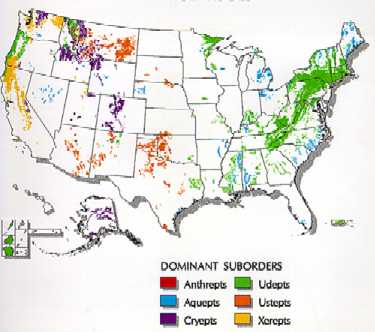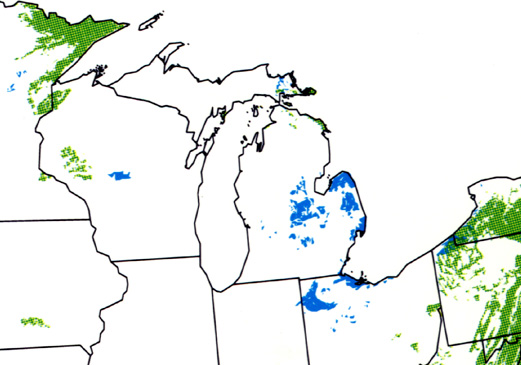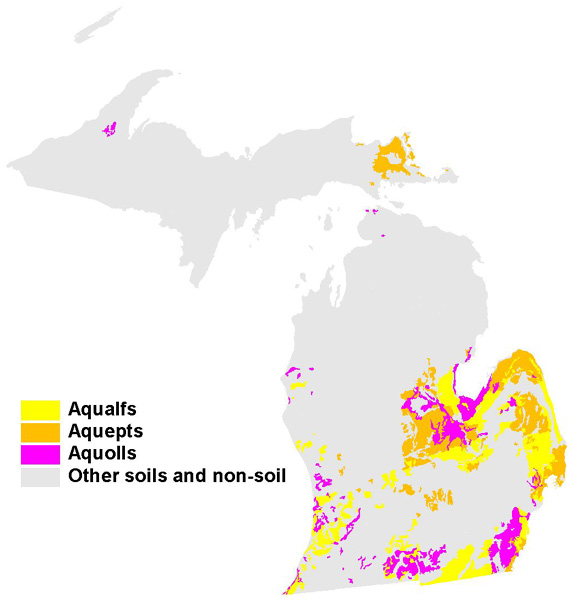INCEPTISOLS
Inceptisols are weakly-developed soils. Inceptisols are soils that exhibit minimal
horizon development. They are more developed than Entisols, but still lack the features
that are characteristic of other soil orders. Inceptisols are widely distributed and occur
under a wide range of environmental settings. They are often found on fairly steep slopes,
young geomorphic surfaces, wet sites, and on resistant parent materials. In Michigan, many
Inceptisols are found on sites so wet that the persistent high water table has inhibited
their development, or on sites where bedrock is near the surface.

Click here for full size image (364 kb)
Inceptisols are soils with weakly developed B horizons, as shown below.
In Michigan, Inceptisols are located primarily in the Saginaw Valley and two areas in the
eastern half of the Upper Peninsula. Little eluviation or illuviation has taken place, and
the soils are characterized by poor drainage and waterlogging. If drained successfully,
they can be productive-as in the navy-bean-producing areas of the Saginaw Valley.
The gray colors, in the soil below, are indicative of wet conditions, and are a
"give-away" that this soil is an Inceptisol.
The map below, which shows the locations of Inceptisols in the Great
Lakes region, should also suggest to you that Inceptisols are also found on steep slopes
(the Appalachian region) or on rocky landscapes (northern Minnesota). What the map
does NOT show is that Inceptisols, like the one shown above, are also found on the rocky
landscapes of the western UP.


In Michigan, most Inceptisols are found on the flat, wet lake plains of the Saginaw
Valley, and those near Toledo. Such soils usually have abundant gray (technically:
gleyed) colors.
Wet Inceptisols are called "Aquepts", which is a combination of the
"ept" from Inceptisol, and the modifier "aqu", which means
"water" or "wet". The map below shows where the wet Inceptisols
occur, in Michigan. Note also that the wet clay plains
of Chippewa County, which were once below a glacial lake, are also mapped as Aquepts.

Parts of the text on this page have been modified from L.M. Sommers' book entitled, "Michigan: A Geography".
This material has been compiled for educational use only, and
may not be reproduced without permission. One copy may be printed for personal
use. Please contact Randall Schaetzl (soils@msu.edu)
for more information or permissions.